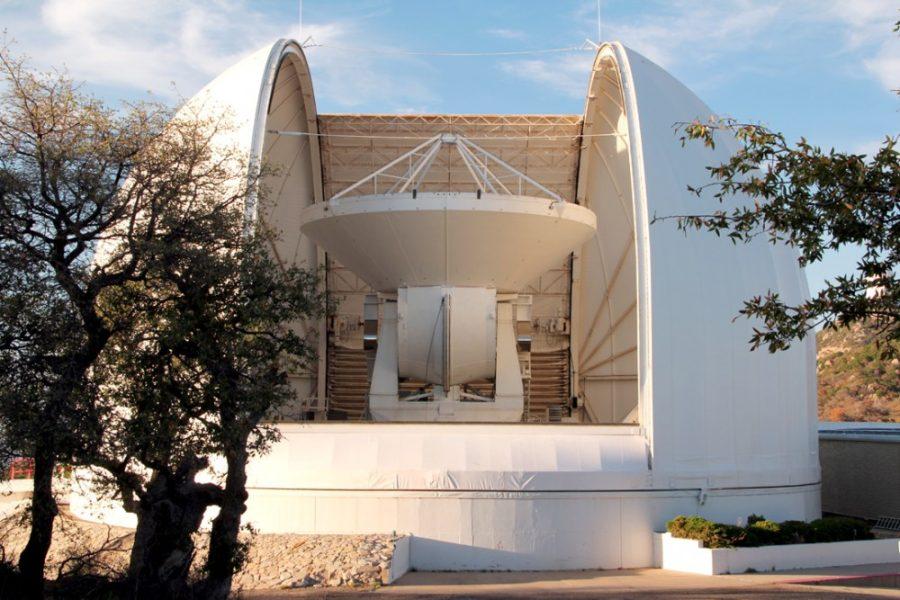The UA has recently installed a $14 million, 40-foot-wide radio telescope on Kitt Peak, which can be used for anything from identifying new compounds in space to studying black holes.
“[The telescope] provides an opportunity for our students and faculty to work at the forefront of millimeter astronomy in both the technology they use and the science problems they try to solve,” said Buell Jannuzi, director of the Steward Observatory and head of the astronomy department.
With this radio telescope, students and faculty at the UA will be able to study the colder, darker matter that is found in interstellar space that people essentially didn’t know about until 35-40 years ago, said Lucy Ziurys, director of the Arizona Radio Observatory and a professor of astronomy and chemistry.
“It’s the colder material from which stars form,” Ziurys said. “It’s also the material that traces when stars die, but it’s nothing you’ll be able to see with your eye.”
They will also study the dying stars that are releasing a lot of molecular material to get an idea of how molecules form, die and evolve in interstellar space, Ziurys said.
Another area of interest, Ziurys added, is searching for organic molecules that could help scientists understand the origins of life both in the galaxy and the solar system.
The telescope represents a significant upgrade over what the university previously housed at Kitt Peak, Jannuzi said.
“It is sensitive, points better and is faster at executing observations,” he said.
In addition to being composed largely of carbon fiber to reduce the overall weight of the structure, the new telescope boasts several improvements that put it on the forefront of telescope design.
“This one is so well-built that when you point it at an object, you are exactly at that object,” Ziurys said. “You don’t have to handle a lot of corrections; it points very accurately. It’s like a factor of 20 over what we had before, in terms of pointing accuracy.”
Because its surface is made of rhodium, it is possible to look at the sun and study solar science, Ziurys said. Panels are usually made of aluminum, which reflects sunlight and will burn up parts of the telescope.
“We use it to collect radio waves, which are emitted naturally from certain types of phenomenon in our galaxy and external galaxies,” Ziurys said.
Radio waves, unlike light, are a part of the electromagnetic spectrum that are not visible to the naked eye.
Radio telescopes in the past have been used to detect compounds like sodium chloride, also known as table salt, or the simplest sugar — glycolaldehyde — out in interstellar space, Ziurys said.
The radio telescope will also become part of a larger array of telescopes from around the world that will be used to study the black holes that exist at the center of galaxies, Ziurys said.
“[We hope to] provide our faculty enough observing time to undertake new projects of a scale that they have not been able to undertake them in the past,” Jannuzi said, “[to] let their imaginations consider new classes of problems to study, not constrained by the limits of the past.”
_______________
Follow Laeth George on Twitter.









